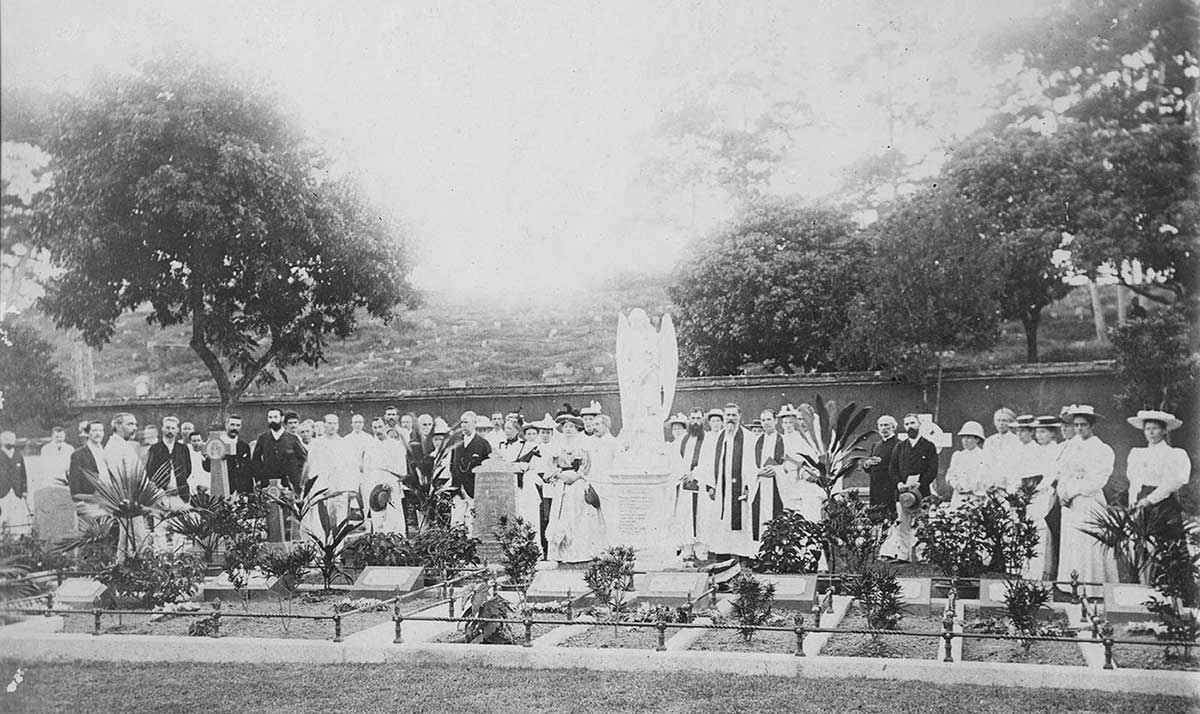This rare autograph quilt is one of the earliest known signature quilts in Australia. In includes about 650 embroidered signatures, names, initials and motifs and was made in about 1894 to raise funds for Saint Mary's Church of England, now Saint Mary's Anglican Church, in Sunbury.
Subscribers paid a donation to have their name or symbol included on a square. Of the hundreds of squares on this quilt, only a small number of individual names have been identified.
Zoom in to see the detail on the quilt
Cotton quilt embroidered with signatures, names, initials and motifs, made in Melbourne about 1894
Fundraising with needlework
Autograph quilts were often made in remembrance of family and friends, or as fundraisers. They were very popular in America throughout the 19th century, but less so in Australia. However, autograph quilts increased in popularity across Australia in the late 19th century.
As a fundraiser, subscribers paid a donation to write their name, signature or monogram on a square. The squares were then returned to the quilters who embroidered the names, and the squares were then patch-worked together to form the quilt. Completed quilts were often presented as gifts to esteemed individuals or auctioned to raise more money.
History of the quilt
The quilt measures 220 by 180 cm, approximately the size of a double bed coverlet. It is double-layered and features an embroidered flounce around the edges. The top layer of the quilt consists of 774 white cotton patchwork squares and features embroidered first names, signatures, initials, monograms, and decorative motifs.
Feather, chain and satin stitch are present, in yellow, white, grey and brown thread. The quilt has been machine-stitched together and the embroidery sewn by hand. The patchwork squares are organised around a large panel at the centre of the quilt which contains an embroidered coronet and four signatures belonging to the Hopetoun family.
The quilt is believed to have been made under the direction of philanthropist Lady Janet Clarke. It references figures including Lord Hopetoun, who was appointed governor of Victoria in 1889.
This quilt is rare and has intriguing associations. The names on the quilt indicate a connection between Melbourne, London and South Africa, and also an unexpected connection to China. The quilt also has connections to the activities of the London Missionary Society in the Pacific, the Lovedale Mission in South Africa and the Church Missionary Society in China.
Research
The National Museum of Australia purchased the quilt from an antique dealer in 2011. Curators knew this was a very special object based on the age of the quilt and some of the names embroidered on it. At the time of purchase, however, it was not known who had made it or why.
Assistant curator Jennifer Moncrieff's starting point was to find out more about the people whose signatures and names adorn the quilt and how they might be connected. Apart from the recognisable historical figures of the Hopetouns and some members of elite Melbourne families, how many other people represented on the quilt could be identified and what was their place in Australian history?
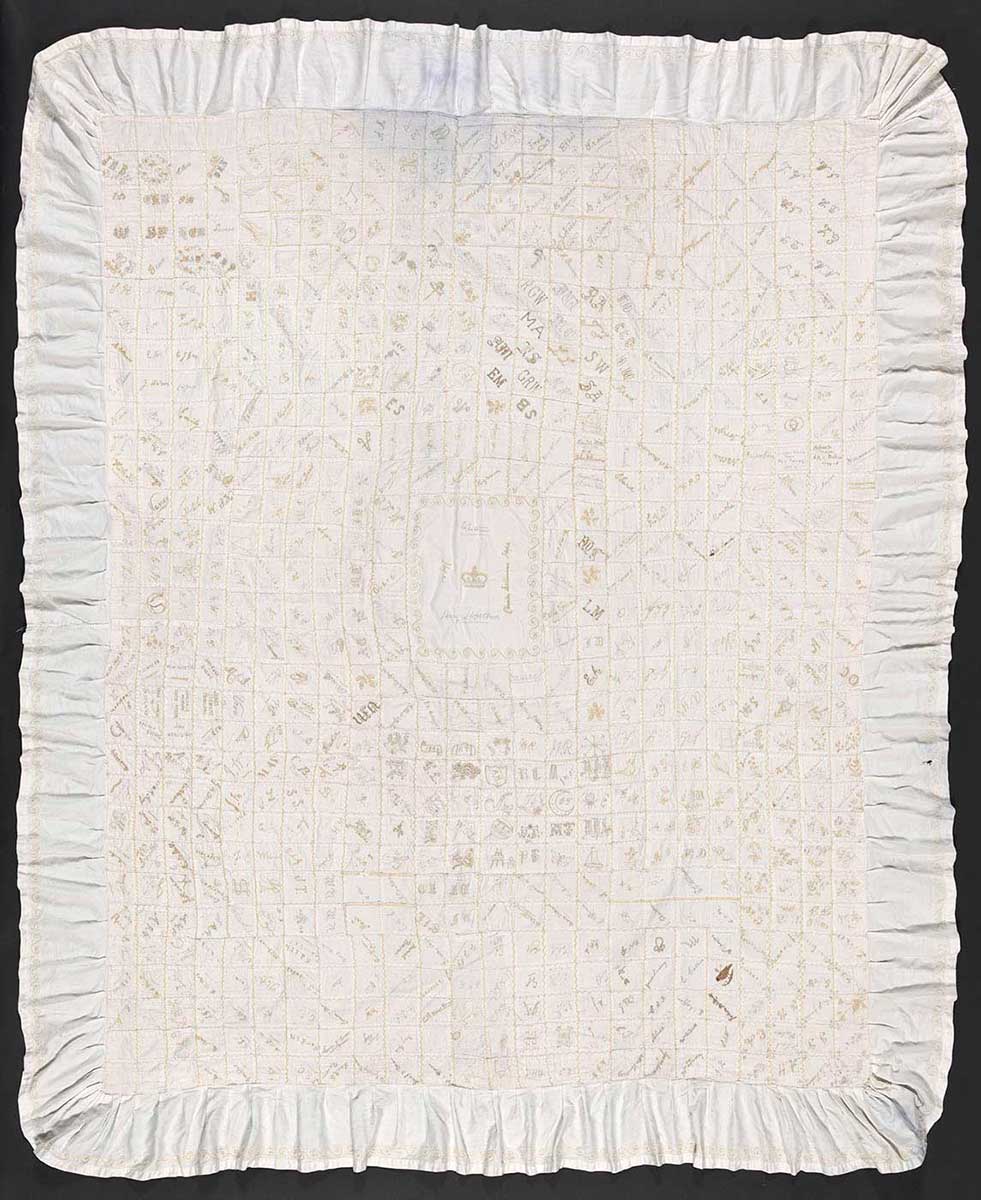
Melbourne connections
The detective work began, based on a number of deductions:
- the number of identified signatures of people living in Melbourne indicated that the quilt was probably made there
- the presence of '1894' embroidered twice on the quilt indicated a likely year of manufacture
- the numerous social connections between Lady Janet Clarke and the other signatories suggested she played a key part in making the quilt.
The posting of Lord Hopetoun as the Governor of Melbourne from 1889 to 1895 was the main factor in anchoring the quilt to a particular timeframe, and the timing of the quilt's production was confirmed by checking biographical details of the signatories. For example, women's marriage dates were checked to confirm use of their maiden names, along with dates of births and deaths.
Missionary links
The presence of signatures relating to missionary activity indicated that this aspect was a significant concern in the making of the quilt. Research began into the connections between the people represented on the quilt and their associations to missionary activity in late nineteenth century Melbourne.
Value of online resources
The value of online resources has been immeasurable in solving the mystery so far. The names on the quilt were entered into the online Australian Dictionary of Biography. Many proved to be prominent citizens of 1890s Melbourne who were associated with each other. Unfortunately, many first names or monograms may never be attributed to particular people.
Searching the digitised newspapers on the National Library of Australia's Trove database revealed connections between the identifiable signatories and contemporary events, and that there was a spike in the making of autograph quilts across Australia in the late 19th century.
These quilts were obviously important community objects to have warranted their description in newspapers of the time.
A search of the National Quilt Register revealed this autograph quilt is a rare surviving example from the 1890s.
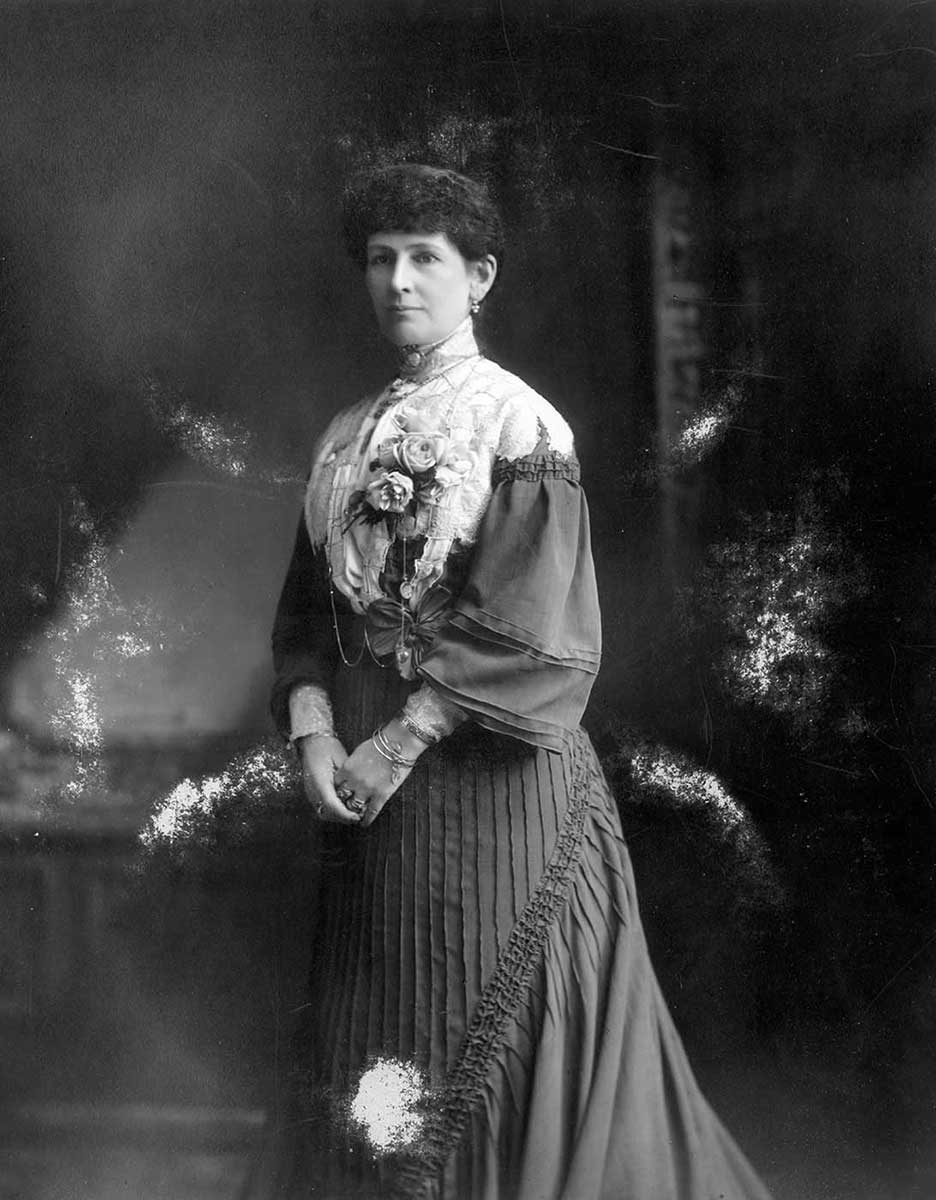
Likely origins: 'women's ingenuity'
Research revealed that this quilt began as a solution to a local problem.
The congregation of Saint Mary's Church of England in Sunbury, Melbourne, wanted a new organ for their church, which is now known as Saint Mary's Anglican Church.
A prominent patron of the church was Lady Janet Clarke, the second wife of Sir William Clarke, the first baronet of Australia. Lady Clarke was at the forefront of Melbourne society for 30 years and was a dedicated philanthropist.
The wealth and social standing of the Clarkes made them influential and they used this to their advantage to raise awareness and funds for various local cause , such as improving working conditions and health for the poor.
The Clarke family had very strong connections to Saint Mary's church. Sir William Clarke had been on the building committee in 1863 and when his first wife died in 1871, he commissioned a marble font for the church. Lady Janet and Sir William's infant daughter, Agnes, died in 1879, and they dedicated an elaborate stained glass window behind the altar to her memory.
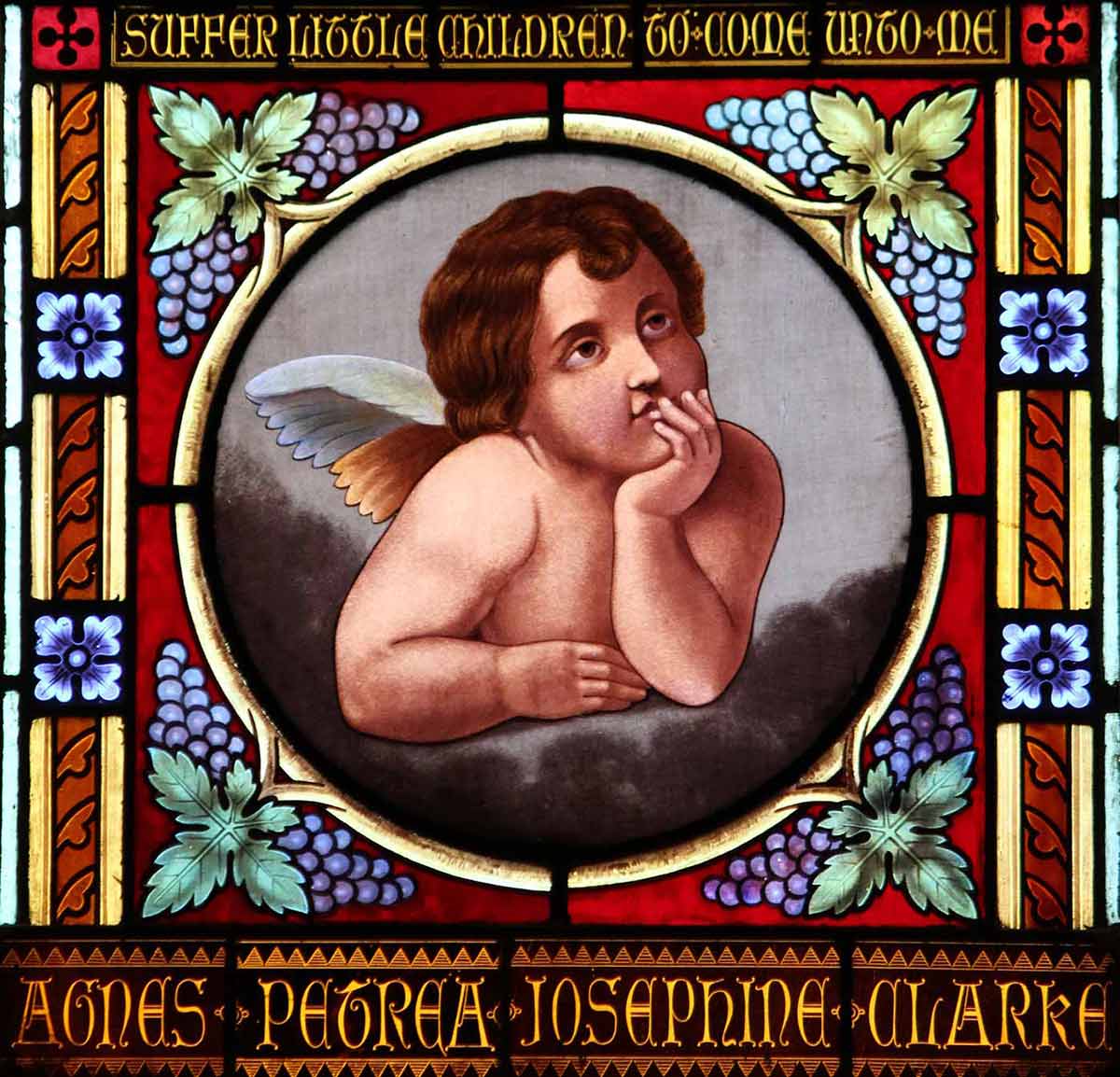
The 'News and notes' section of the Sunbury News and Bulla and Melton Advertiser on 6 October 1894 reported, under the subheading 'Women's ingenuity', that Lady Janet Clarke and other women of the St Mary's congregation had suggested the 'novel' idea of using an autograph quilt to raise the necessary funds for an organ.
Similar fundraising quilt projects were also undertaken in Melbourne and Sydney at this time.
Lady Janet Clarke had a women's sewing group called 'Time and Talents' that made clothing and textile goods for the poor. It is possible members of this group were also members of the Sunbury congregation, and would have possessed the skills to make the quilt.
The different stitch techniques and sewing skills indicate that a group of women worked on a set of squares to form individual sections of this quilt. They used the same colour and ply of embroidery thread in each section.
It is probable the women embroidered the squares separately before the pieces were stitched together by machine, and then the seams were embroidered with featherstitch. Production of the quilt likely began in October 1894.
The squares of this autograph quilt were charged at one shilling a piece. It is estimated the quilt raised approximately £38 through square subscriptions. The quilt also raised £27 when it was auctioned at a Presbyterian Church fair fundraiser in response to the August 1895 Kucheng Massacre in China (see Kucheng Massacre below).
Although the quilt subscriptions raised more than other autograph quilts in Melbourne in the 1890s, it fell well short of the cost of a new church organ which was between £300 to £400.
Nevertheless, a new organ was purchased for Saint Mary's church and it was first played in February 1895 at the Church of England Parochial Festival. It was a significant occasion, but there was no mention in local newspapers of the quilt featuring at the event.
It is possible the organ was purchased with a combination of funds from the quilt subscriptions and a large donation from other individuals, perhaps including the Clarkes. This is a likely scenario as other autograph quilts made in Melbourne at the time took up to 16 months to make, well beyond the four or five months of Lady Clarke's fundraiser.
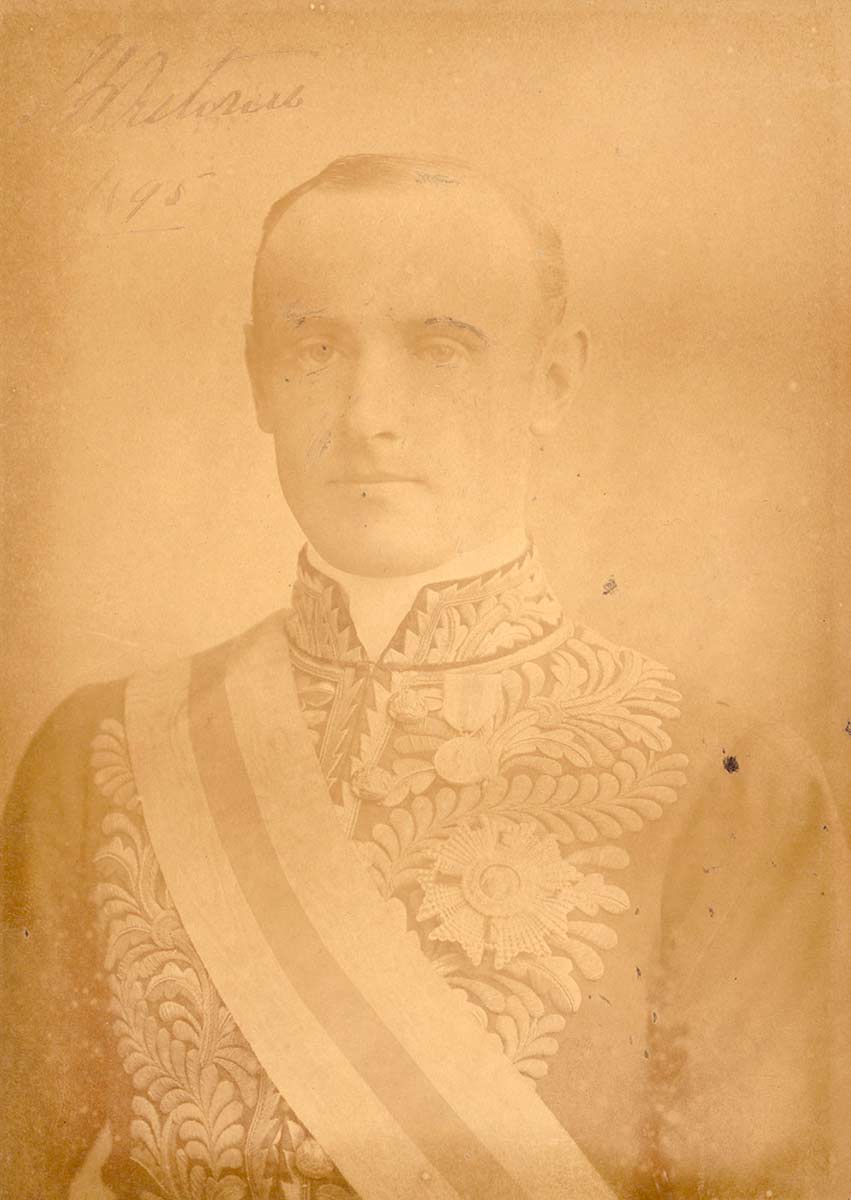
Prominent subscribers
The signatures on the quilt are suggestive of the elite social network in Melbourne in the 1890s.
There are many legal, academic and clerical connections, particularly among individuals whose names are represented in the centre of the quilt surrounding the Hopetoun panel. Many of these individuals also had philanthropic concerns like those of Lady Clarke.
See each of these subscriber sections up close in the image at the top of the page.
Hopetoun family
The Hopetoun family were the most prominent quilt subscribers.
John Adrian Louis Hope, the seventh Earl of Hopetoun, served as Governor of Victoria from 1889 to 1895, and later as the first Governor of the Commonwealth of Australia from 1901 to 1903.
Hopetoun was a popular governor, and he and his wife, Lady Hersey Hopetoun, supported many Melbourne charities and were closely associated with the local Presbyterian Church.
Their affection for the city was seen in the naming of their son, Charles Melbourne Hope, born in Melbourne in 1892. Charles Melbourne Hope's name joins that of his parents on the central panel of the quilt, along with his elder brother Victor who signed his name 'Hope'.
Governor and Lady Hopetoun were at the centre of Melbourne's elite social circle, and were likely very socially involved with Sir William and Lady Janet Clarke.
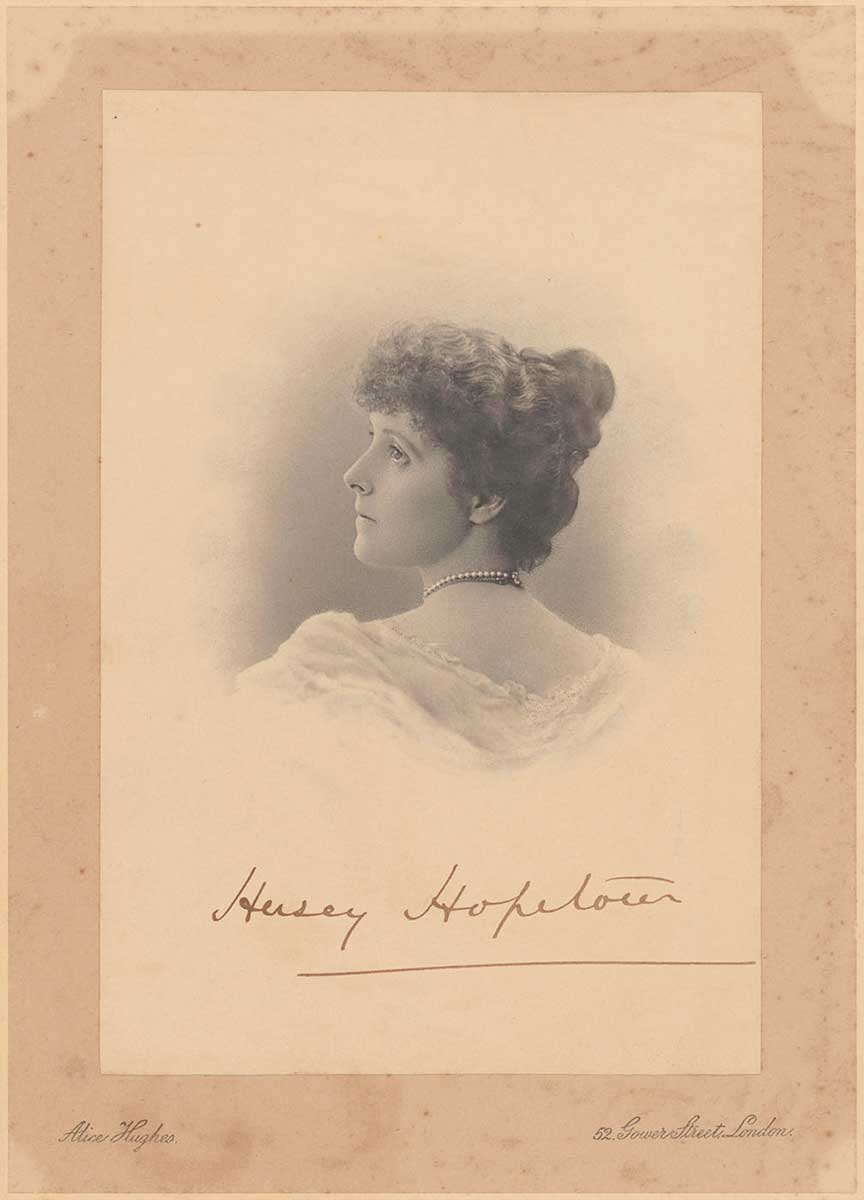
Inner circle
Around the central square are many individuals associated with Lady Janet Clarke and it is likely these individuals also socialised with one another.
Janet Clarke's signature is joined by that of her husband, stepdaughter Ethel Clarke, sister Lily Snodgrass and cousin, artist Ellis Rowan.
The presence of Ethel Clarke's signature indicates that she signed her square prior to 18 April 1895, the date of her wedding day to George Cruickshank, MLA, of Inverell, New South Wales.
A number of prominent families are represented in the other squares surrounding the central panel. Many heads of these families were involved in the Melbourne judicial system, such as Sir Thomas à Beckett, Sir Edward D Holroyd, Sir Henry Hodges, and Chief Justice Sir John Madden. Jessie Bruce Williams, wife of judge Sir Hartley Williams and possibly her daughter, Kathy, also appear in the inner circle.
Other significant male personalities were politicians including James Service, William Davies and Thomas Luxton, who was mayor of the city of Prahran from 1894 to 1895.
Another prominent family represented on the quilt is the Bevans. This includes Reverend Llewelyn David Bevan, a congregational minister who was a leader of Protestant intellectual life in Melbourne for 20 years, and his wife, Louisa J Bevan, who shared her husband's intellectual and philanthropic interests.
Other members of their family include son HL Willet Bevan, a Congregational minister in South Australia, Penry V Bevan, a science professor at University of London, and Louis RO Bevan, a professor of law in China.
Missionary personalities
The quilt also features signatures related to missionary activity. Melbourne Presbyterian churches in the 1890s were very involved in overseas mission activity in South Africa and the Pacific, conducted by groups including the London Missionary Society and the Church Missionary Society.
Missionary personalities represented on the quilt include Roger Turpie, captain of the London Missionary Society steamer SS John Williams IV, who visited Melbourne in 1894.
There are also people associated with the Presbyterian Lovedale Mission in South Africa, run by the Church Missionary Society. These include James Stewart, WJB Moir, James Aitken, John Knox Bokwe and James Makepe and students Shamo Ayanso and Gilo Kashe.
The students were part of a group of about 200 Oromo slaves (from Gallaland in present-day Ethiopia and northern Kenya) rescued from Arab slave traders by the British Navy in 1888. These rescued slaves were mostly children who stayed at a mission in Aden, Yemen, before 64 children, mostly around eight and nine years old, were cared for at the Lovedale Mission from 1890.
Interest in missionary work in Melbourne was established through the press, by visiting missionary personalities and through lectures and meetings such as the United Missionary Conference held in Melbourne in 1893. James Stewart and James Aitken visited Melbourne in 1891 and 1893, respectively.
Other representatives from the Church Missionary Society also visited Melbourne, notably Reverend Robert W Stewart, who gave a lecture in 1892 on his missionary work in China.
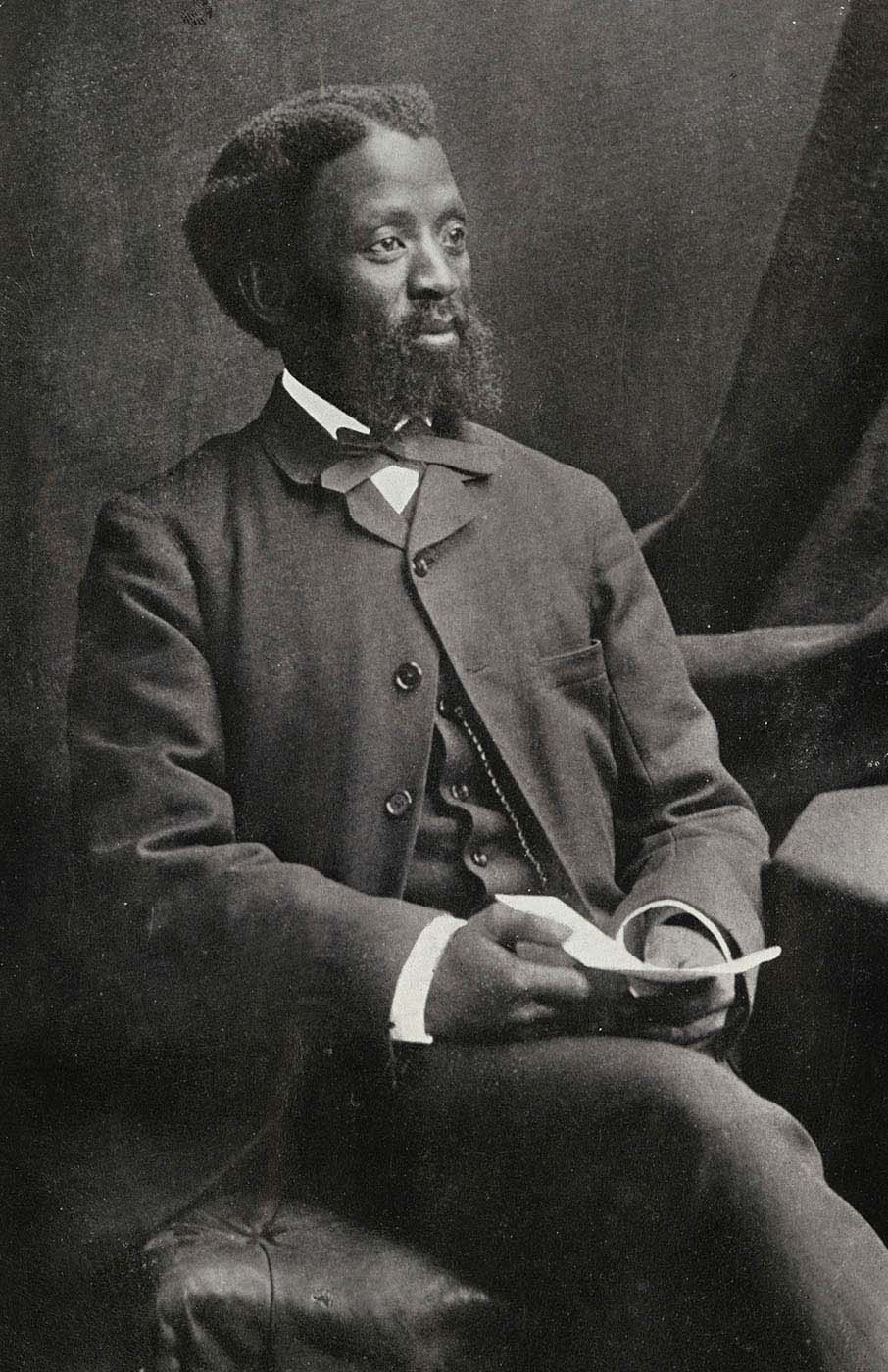
John Knox Bokwe
John Knox Bokwe was born in 1855 near the Lovedale mission station in South Africa and was named after the eminent Scottish Presbyterian John Knox.
His father, Jacob, was one of the early students enrolled at Lovedale when it opened in 1841.
John worked at Lovedale in order to pay his tuition fees. He was a house and stable boy to the future principal of the mission, James Stewart, in 1867 and later became his secretary.
In addition to his studies, John received music lessons from Stewart’s wife, Mina, playing the piano and organ. This laid the foundations for John’s talent in composing choral music.
Following his graduation, John continued at Lovedale as a bookkeeper, interpreter, postmaster, and occasional teacher.
He was the choirmaster at Lovedale for more than 20 years, and with the Lovedale Press, published collections of songs in Xhosa and English, including 'Lovedale Music' (1885).
James Aitken performed a song composed by John when he visited Adelaide in 1892.
Gilo Kashe
Gilo Kashe lived at Lovedale mission station from his arrival in 1890 with the other children, aged about 16, until he died on 15 February 1948.
Gilo had worked in Tigray, Ethiopia, for a man named Butta, collecting cow dung which when dried was used as fuel.
He was a popular student among his peers and teachers at Lovedale. However, presumably due to ill-treatment or shock from when he was a slave, Gilo was unable to work much beyond running errands, and could not remember much of his life before enslavement.
Shamo Ayanso
Shamo Ayanso was also aged about 16 when he was rescued from slave traders. He grew up in a village near Guma in Ethiopia with his parents and siblings.
Shamo’s father farmed land he leased from another villager. The village chief sent Shamo and other people to help build houses in a neighbouring village, Sidama, about a day's journey away. Shamo was captured by one of the Sidama villagers and imprisoned for two days before being taken to a market to be sold.
Shamo ran away, but was recaptured and enslaved by another man when he asked for help. This man kept Shamo for a week before exchanging him for a donkey. Shamo Ayanso was sold four more times before he was rescued.
Motifs on the quilt
The quilt features an array of natural motifs, such as birds, insects and flowers, religious motifs including crucifixes and ladders, and maritime motifs such as boats and anchors. These were included in the quilt as either personal symbols related to the signatories, as in the case of the crown in Governor Hopetoun's panel, or for decoration.
There is perhaps even a self-portrait, the profile of a moustachioed man in a beret or Tam O'Shanter. Many motifs are unidentified at this stage and further research may reveal more information.
Kucheng Massacre
The first mention of the completed autograph quilt now in the Museum's collection is in The Coburg Leader of 17 August 1895, when it was displayed at the Coburg Presbyterian Church Bazaar. This article provides the most extensive description of the quilt known:
… the autograph quilt was on view on the platform. All varieties of calligraphy were represented upon it in silken lines. The autographs of the Earl and Countess of Hopetoun, surmounted by the royal arms occupied the centre.
The bazaar was held to raise money in response to the Kucheng Massacre in China. A rebel Buddhist group, called the 'Vegetarians' or Zhaijiao, attacked western missionaries who were holidaying at Huashan, Gutian county in Fujian Province on the southeast coast of mainland China.
Eleven people were killed, including Reverend Robert W Stewart who had visited Melbourne three years before, and three Australian women, Annie Gordon from Ipswich and sisters Nellie and Topsy Saunders from Melbourne. The attack occurred at dawn on 1 August 1895, just a week prior to the Coburg bazaar.
The massacre was a significant event in British missionary history and for foreign relations with China. Today, the massacre is considered the most violent attack on foreigners in China prior to the Boxer Rebellion of 1899–1901.
The autograph quilt was auctioned at the bazaar, contributing £27 to the fundraiser.
Continued appreciation
Fourteen months after its auction, the Warragul Guardian of Friday 23 October 1896 recorded that the quilt was displayed at the Warragul Presbyterian Church Bazaar, art and floral exhibition. Displaying the quilt in other churches served to connect the local Presbyterian community.
It is possible this autograph quilt sparked a trend for other church committees to fundraise with quilts, especially among the Presbyterian congregations across Victoria, including inner city congregations and those in regional areas.
The quilt had personal beginnings, arising from small-scale, local-level church fundraising, but through the quilt's subscribers and its auction, this remarkable object of community endeavour was associated with far-reaching congregational concerns.
The autographs depicted on the quilt continues to be of major interest today.
